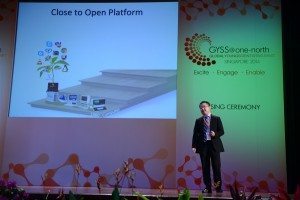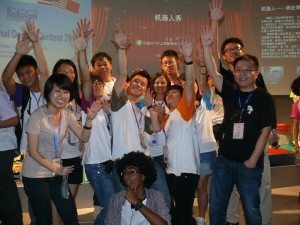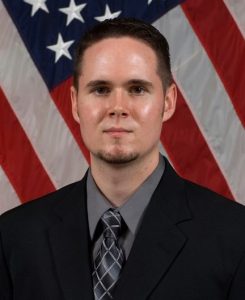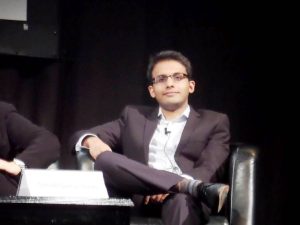In January of this year Singapore played host to the Global Young Scientists Summit, or GYSS (click here for our earlier article on this event). An integral part of this event was a design competition called the Singapore Challenge. Participants in this competition, researchers under 35 nominated from around the world, were invited to submit proposals that addressed challenges related to urban development. The theme of this year’s challenge was “From Sensing to Solution: Leveraging ICT to Build Sustainable Cities.” A total of 35 proposals were submitted, and among the 10 shortlisted finalists was IEEE member Dr. Jason Gu.
We spoke to Jason about the proposal he submitted to the Singapore Challenge, and how IEEE has played an important role in his career development so far.
Jason is currently an assistant professor at the Singapore University of Technology and Design (SUTD). He also holds a joint appointment as a research scientist at the Advanced Digital Sciences Center, University of Illinois Urbana-Champaign in the US. He received his PhD from the University of Minnesota, Twin Cities in 2010. He is an author or co-author of over 50 peer-reviewed papers in various journals and conferences.
His research includes Networked Embedded Systems, Wireless Sensor Networks, Cyber-Physical Systems, Wireless Networking, Real-time and Embedded Systems, Distributed Systems, Vehicular Ad-Hoc Networks, and Stream Computing Systems.
Jason’s proposal for the Singapore Challenge involves an open platform called

Jason Gu presenting at GYSS
the “Idea Store”, which facilitates contributions from both city planners and residents. It was inspired by “app stores” for smartphone apps. The intent is for the platform to integrate raw data sensing, data processing, and big data analytics to facilitate interaction between city planners, municipal authorities, and residents themselves. Ultimately, the proposal seeks to encourage shared ownership of finding solutions for urban problems.
The typical municipal planning approach is very much top-down; city residents are often not sufficiently motivated or empowered to improve their living environment. But the “Idea Store” aims to change that with built-in “drag-and-play” block programming functionality, so even an average resident without prior programming training would be able to use it.
This idea of empowering citizens to shape the city around them stems from the emerging technological trend of “the Internet of Things,” sometimes referred to as “IoT,” “pervasive sensor networks,” and various other names. A network of interconnected smart objects, cameras, sensors, and so on generates much data which can be analyzed and used to inform better city planning and design. Singapore – a city-state with clearly defined boundaries, contained geographical spread, a reasonably-sized population, and a high level of internet connectivity – is the perfect sandbox for such a project.
Three key features behind this proposal are big-data management capabilities; a user-friendly drag-and-play programming platform with visualization tools that let users jointly experiment with the data; and utilization of a cloud-based execution engine.
Jason hopes that this idea can improve quality of life for city residents in the short term; in 5-10 years it has the potential to make a substantial improvement in urban conditions if a critical mass of worldwide data points is reached (allowing benchmarking, comparison, and derivation of best practices to apply in response to various issues). In the long term, he surmises the team can even work with social science researchers to study the interactions that take place throughout the Idea Store – illuminating the human process of developing ideas into solutions.
IEEE membership definitely paid off for Jason, since he found his current job through an IEEE job site listing! Jason joined SUTD – Singapore’s newest university established in partnership with MIT, with a focus on technology and design – three and a half years ago, among the first faculty members to join. His initial office was a vacant block of old offices that previously belonged to the Singapore Ministry of Education. Jason notes that in these early days there was a true “pioneering spirit,” because they were designing the new campus from the ground up. In particular, they sought to design things differently from existing universities (the goal of SUTD was not to be yet another clone of the mainstream university model, but rather to take a different approach), right down to details such as deciding what books and journal subscriptions to buy for the library (the IEEE digital library was among those chosen, of course).
One aspect that differentiates SUTD from many established universities is their use of the “home room” concept. Each first-year student cohort stays in the same classroom, which has easily reconfigurable furniture to facilitate group work for different group sizes and 3D printers that the students can use for fast prototyping.
Because of the large class size, there can be up to 3 instructors in the classroom

Jason Gu with students at Robocon
simultaneously. Jason notes that this calls for a radically different teaching approach than traditional lecturing. The instructors need to do much more preparation, and need to communicate frequently to ensure they are consistent in their teaching speed, methods, and expectations of the students. They do less “instructing” and more “facilitating.” Typically after spending 10-20 minutes introducing basic concepts, they guide the students through hands-on group projects.
This approach has its drawbacks for the instructors, though – mainly long meetings between the faculty. For a compulsory first-year course there may be up to 20 instructors for the same program, with weekly 2-hour meetings to keep everyone in sync.
In spite of this, joining SUTD was a great career move for Jason, because while he’s still quite young, he’s already among the more senior faculty members. The research support is excellent as well; he has access to $10m in funding and his team consists of over 10 post-docs, PhD students, and teaching assistants.
Jason appreciates the recognition he has received as an IEEE member, especially since 80% to 90% of his articles are published in IEEE journals and conferences. He is working on elevation to senior membership, and has already set a goal to eventually become an IEEE Fellow. We wish him the best of luck!
Article contributed by Helene Fung, Senior Strategy and Business Development Manager, IEEE Singapore





